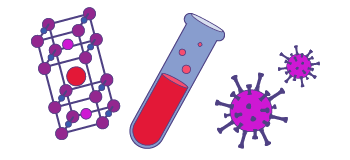Central transitions of half-integer quadrupolar nuclei are broadened by second-order quadrupolar shift even under magic angle spinning (MAS). High magnetic fields are effective reducing the quadrupolar broadening achieving high spectral resolution and sensitivity.
Innovative NMR methods such as double rotation (DOR), multiple-quantum MAS (MQMAS) and satellite-transition MAS (STMAS) can be used to separate quadrupolar and chemical shift broadening and obtain isotropic resolution. These capabilities are available at various high-field NMR instruments. The high fields are particularly useful for low-γ nuclei which have inherent low sensitivity.
The following spectrometers are available for this technique:
The following probes are available for this technique:

Explore our magnet schedule to see what exciting research is happening on our stellar fleet of instruments right now.
Last modified on 09 August 2024